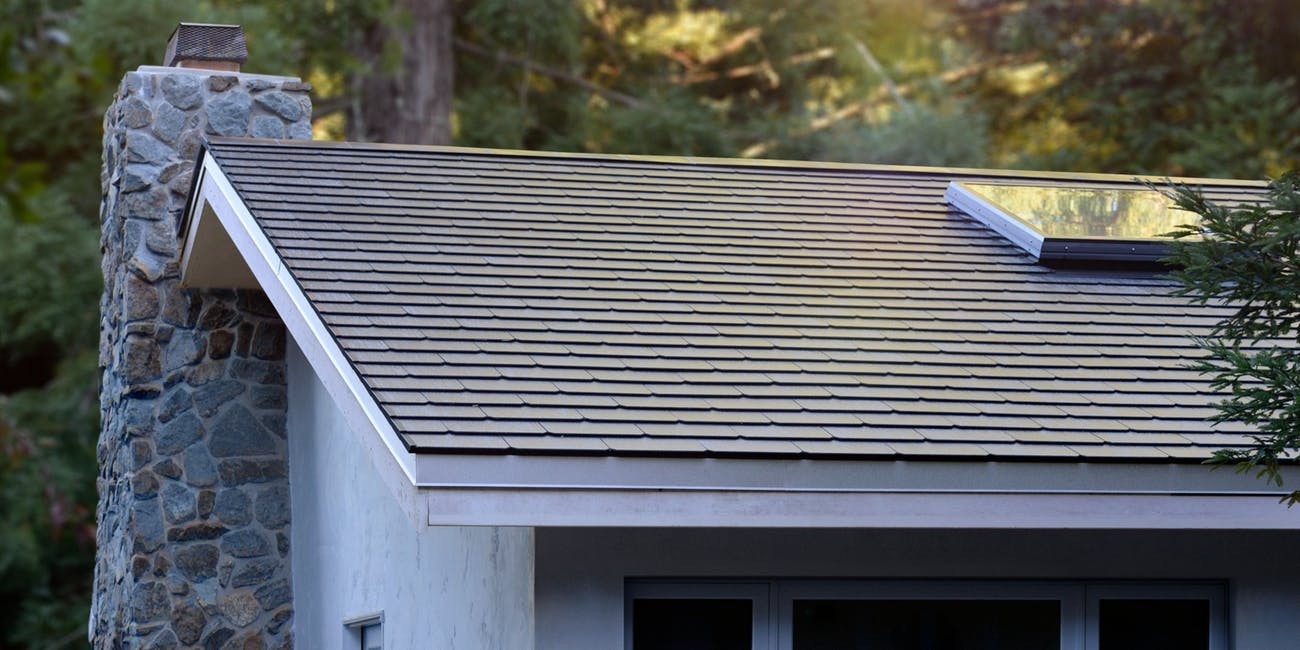Tesla Solarglass doesn't visually differ from ordinary tiles, but produces twice as much energy as conventional solar panels. It was first introduced in 2016, and since then the company has been improving it.
A PV roof tile (or solar roof tile) is a type of PV module shaped like a roof tile and typically enclosing fewer solar cells than a conventional solar panel. Note that such PV roof tiles can function as both PV cells and roof tiles at the same time.
September 4, 2018 Tesla filed, and March 5, 2020 published the patent 'Solar roof tile module'.
This disclosure is related to photovoltaic roof modules with improved aesthetic and power efficiency.
The photovoltaic roof tile module can include at least: a first photovoltaic roof tile and a second photovoltaic roof tile positioned adjacent to each other, and a spacer coupled to and positioned between the first and second photovoltaic roof tiles.
A respective photovoltaic roof tile can include front and back glass covers, and multiple cascaded strings encapsulated between the front and back glass covers. A respective cascaded string can include a plurality of photovoltaic structures electrically coupled to each other in series, and the multiple cascaded strings can be electrically coupled to each other in parallel. The first and second photovoltaic roof tiles can be electrically coupled to each other in parallel.

Source: Tesla
A respective photovoltaic structure can include a first edge busbar positioned near an edge of a first surface and a second edge busbar positioned near an opposite edge of a second surface. The plurality of photovoltaic structures can be arranged in diffetent ways:
- the first edge busbar of a first photovoltaic structure overlaps the second edge busbar of an adjacent photovoltaic structure;
- the multiple cascaded strings can be arranged in such a way that an edge busbar of a first cascaded string and a corresponding edge busbar of a second cascaded string are substantially aligned in a straight line;
- the photovoltaic roof tile module can further include a metallic strip coupled to the corresponding edge busbars of the first and second cascaded strings to enable in-parallel coupling between the first and second cascaded strings;
- a front-facing edge busbar of a respective cascaded string can be coupled to a bridge electrode;
- the back glass cover can include a glass substrate and a pre-laid circuit attached to the glass substrate;
- the spacer can include an embedded circuit configured to couple to pre-laid circuits of the first and second photovoltaic roof tiles.
In a variation on this embodiment, each of the first and second photovoltaic roof tiles is oriented in a portrait fashion, and the first and second photovoltaic roof tiles are placed in such a way that a longer edge of the first photovoltaic roof tile is adjacent to a corresponding longer edge of the second photovoltaic roof tile.
Embodiments of the invention solve at least the technical problem of improving the aesthetics and efficiency of photovoltaic roof tile modules. More specifically, each roof tile can include multiple sets of photovoltaic strips arranged in a portrait fashion, with one set of photovoltaic strips positioned on top of the other neighboring set of photovoltaic strips.

Source: Tesla
Photovoltaic strips within each set are arranged in a shingling fashion with adjacent edges of neighboring strips overlapping each other. These shingled photovoltaic strips are electrically coupled to each other in series.
On the other hand, different sets of photovoltaic structures are coupled to each other in parallel. Moreover, multiple photovoltaic roof tiles can be assembled into a module. In some embodiments, the roof tiles are arranged in a lateral fashion. The multiple photovoltaic roof tiles can be electrically coupled to each other in parallel.
The portrait layout of the roof tiles can provide better aesthetics than roof tiles with landscape layout. Moreover, the parallel coupling between the different sets of photovoltaic strips within each tile can reduce the internal resistance of each tile, thus improving power efficiency.








